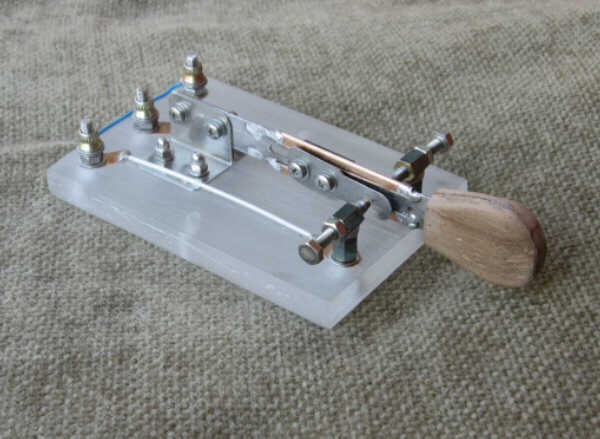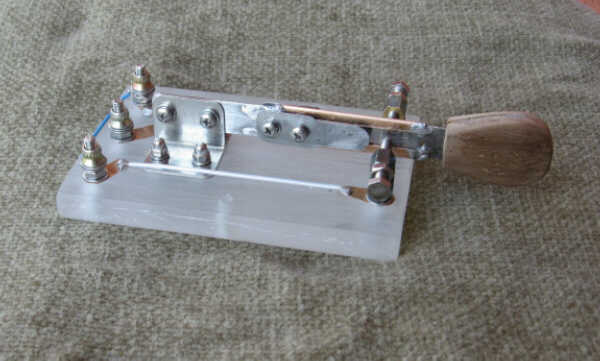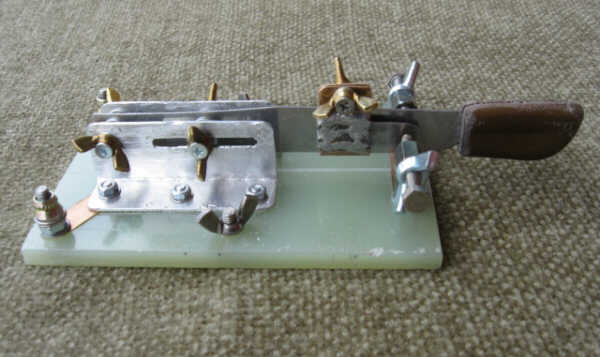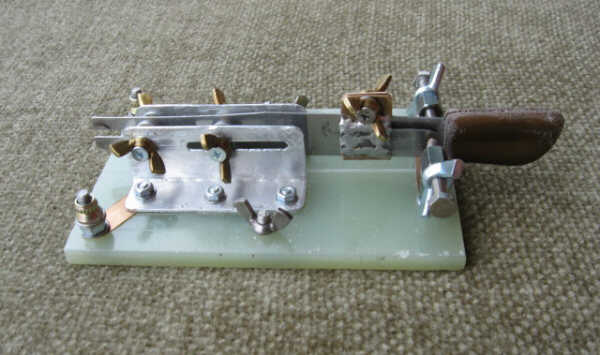I1GIS's keys.
Homebrew Single Blade Lever Sideswiper.
My first aim was to have a low noise key. The two little movable contact blades solve the problem. An opening, 3 cm long, for 3 mm screws inside the main blade, allow the contact blades to be moved along it giving the possibility to have hard/soft lateral impact and consequently more/less impact noise. Lateral impact may be on the main blade also, moving back the little blades, returning to the behavior of a traditional side. See the above pictures, on the left: soft impact/low noise, on the right: impact on main blade. I have eliminated the flexibility in the central part of the main blade, but I have allowed it a little flexibility in the knob area, just to avoid the wall effect that represent a difficulty to me. For this, I have soldered two pieces of brass, U shape, 3 cm long, in the central part of the main blade. The force required to move the main blade is not adjustable and chosen on my preference. This is the state of the art at the moment, the key seems to work fine in my hand, anyway I have to use it for days, to see if some problem will arise: anyway I'm doing a side for my own use. [I1GIS].
Multi-regulations homebrew sideswiper.
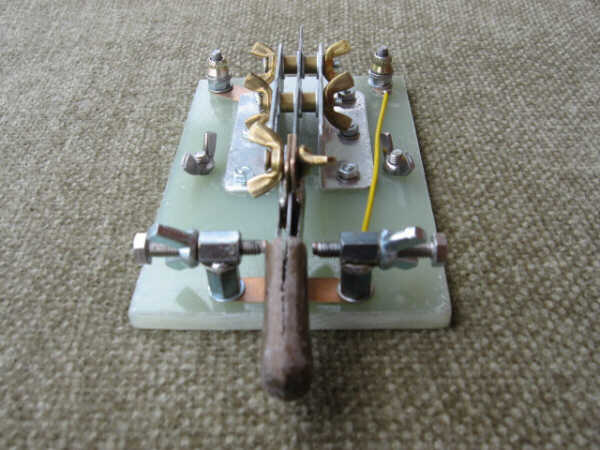 Designing this key I have included a number of regulations in order to test the specific impact of each of them.
Designing this key I have included a number of regulations in order to test the specific impact of each of them.
The blade and the handle originate from a knife. A 5 cm long aperture in the last part of the blade and a 3 cm long window, for 3 mm screws in the two aluminium L shape supports, allows one of the two fixing points of the blade to be moved. This results in a variation of the blade hardness.
The handle position can be changed (about 1 cm) moving the blade longitudinally before fixing it.
Contact may be against two little stainless steel blades, soldered to a movable support that can be fixed to the main blade with a screw or directly against the main blade itself, shifting or taking the little blades' support off.
By changing the little blades' position (if these are used), different lateral impact hardness is obtained. All of the screws involved in regulations have wing nut, so any further tool is required.
Photos above show two different handle positions: long lever on the left, short lever on the right.
All of these regulations enabled me to become more familiar with this type of key.
[I1GIS].
